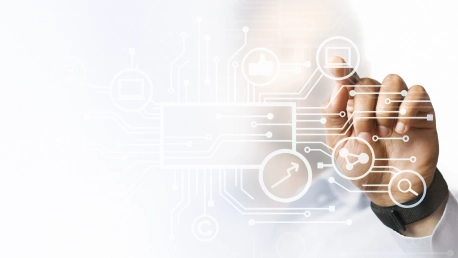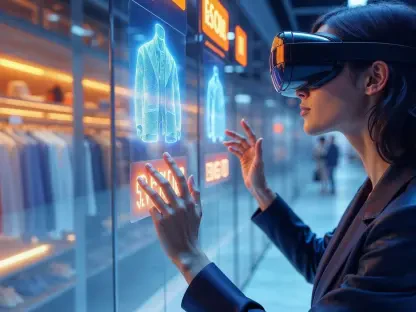The Internet of Things (IoT) heralds a new era for retailers, redefining how they manage inventory and engage with customers. IoT’s real-time data collection and analysis capabilities drive greater operational efficiency and offer more tailored customer experiences.One of the key advantages of IoT in retail is optimized inventory management. Sensors and smart devices can track stock levels, reducing over-ordering and stockouts. This precision ensures that popular products are always available, which in turn can lead to increased sales.The customer experience is also enhanced by IoT. Personalized marketing becomes more achievable as retailers can now understand shopping behaviors and preferences through collected data. Customers can enjoy a more seamless journey, with IoT enabling things like automated checkouts and offering targeted deals and recommendations.However, there are challenges to IoT implementation, including the initial financial outlay for technology and infrastructure, and ongoing costs like maintenance and data management. Retailers must also address concerns related to data security and privacy given the sensitivity of customer information being handled.Despite these hurdles, the benefits provided by IoT technology – improved inventory accuracy, a more personalized shopping experience, and the potential for cost savings in the long run – make it an invaluable tool for retailers looking to remain competitive in a rapidly evolving market.
Enhancing Operations with IoT-Driven Innovations
Smart Inventory Management
IoT technology has revolutionized inventory management by introducing precise tracking capabilities that are reshaping retail operations. Sensors, RFID tags, and connected devices work together to monitor stock levels in real-time. This prevents the common pitfalls of overstocking, which leads to unnecessary costs, and stockouts, which can result in lost sales. The technology is so advanced that it can predict inventory needs based on sales trends, weather, and other external factors.Amazon Go is a prime example of this transformation. The fully automated store relies on IoT sensors to track which products are removed from the shelves by customers, automatically updating inventory levels. This real-time visibility significantly streamlines replenishment processes and reduces the time and labor traditionally required to manage stock, ultimately enhancing the shopping experience.
Streamlining the Supply Chain
In the realm of supply chain management, IoT provides unprecedented efficiency and waste reduction. Connected devices track products from warehouse to store shelf, providing awareness and control over the entire lifecycle of merchandise. With this information, retailers can optimize delivery schedules, reduce the carbon footprint of their operations, and ensure products reach shelves while they’re fresh and in demand.Retail giant Walmart has harnessed IoT’s power for just such purposes. By utilizing extensive tracking systems, Walmart has achieved improved freshness of perishable goods, which is critical for customer satisfaction and brand reputation. Not only does this method reduce waste through improved shelf-life management, but it also aids in meeting consumer demand for sustainable business practices.
Energy Management and Predictive Maintenance
In the retail industry, where energy expenditures comprise a substantial portion of operational costs, smart energy systems have emerged as a revolutionary force. These systems are underpinned by the Internet of Things (IoT), a network of interconnected devices exchanging data to create more efficient environments. This technology proves instrumental in reducing energy consumption within retail spaces by intelligently managing resources depending on occupancy and ambient conditions.Lighting, heating, and air conditioning can now be finely tuned, activating only when needed and adjusting to the number of customers present and weather factors—all leading to significant energy savings. Beyond the immediate utility reductions, predictive maintenance represents another domain where IoT’s impact is transformative. Notably, retail giants such as Walmart are employing sensors that facilitate timed notifications concerning possible malfunctions in critical machinery, like cooling systems.By intercepting problems ahead of time, these retailers can considerably cut down on both unexpected downtime and associated costs that come with emergency repairs. Such preventive measures ensure that systems function optimally, reducing the likelihood of significant breakdowns. The synergy between IoT technologies and retail operations is proving to be a powerful tool in both cost reduction and efficiency enhancement, setting a new standard in the industry for sustainability and operational excellence.
Security and Surveillance Enhancement
Retail outlets are increasingly turning to the Internet of Things (IoT) to bolster their security measures. By integrating AI-driven cameras and sensors within their premises, these businesses are now more adept at spotting unusual activities that might suggest a security threat like theft or unpermitted entry. This not only facilitates quicker reactions to such events but also significantly enhances the efficiency of security systems in real-time.These sophisticated surveillance solutions offer more than just loss prevention. They serve a multifaceted purpose by gathering continuous streams of data. This data is invaluable as it not only contributes to the reinforcement of security protocols but also informs retailers on optimizing store layouts. By analyzing patterns and customer behaviors, stores can rearrange their spaces to improve traffic flow and customer experience, which in turn may help reduce the opportunities for theft and enhance safety measures.In this digital era, where traditional security systems may no longer suffice, IoT-enhanced surveillance represents a powerful tool for retailers. It presents a proactive approach to asset protection, combining immediate alertness to potential threats with strategic insights into store management. The end result is a safer, more secure, and customer-friendly shopping environment that adapts to the evolving dynamics of retail operations.
Personalizing Customer Engagements with IoT
Leveraging Customer Tracking for Marketing
Retailers are harnessing the power of Internet of Things (IoT) technology, like beacons, to delve deeper into the shopping habits of their customers. By strategically placing these devices throughout stores, businesses can gather data that reveals how customers navigate the shopping environment and what captures their attention.This information is a goldmine for creating marketing strategies that target specific consumer needs and preferences. Customers receive more relevant offers and promotions, leading to a heightened shopping experience that is unique to their tastes and previous behavior. As a result, retailers not only see increased customer engagement but also foster greater brand loyalty.Perhaps the most striking example of such data-driven personalization in action is Amazon’s recommendation system. By analyzing a customer’s past purchases and interactions with various products, Amazon’s algorithms are able to present highly curated product suggestions. These recommendations often resonate with customers, significantly increasing the likelihood of a purchase.Incorporating these insights, retailers refine their offerings to match the evolving desires of their clientele. The fusion of IoT technology and data analytics is revolutionizing retail, converting routine shopping trips into tailored experiences that delight customers and simultaneously drive sales.
Augmented Reality and IoT for Immersive Experiences
The retail landscape is being transformed by the fusion of Augmented Reality (AR) with the Internet of Things (IoT), offering customers innovative ways to engage with products before making a purchase. Retailers such as Ulta and IKEA are at the forefront, incorporating AR to enable virtual product trials. This technology allows consumers to visualize how products might look or fit within their environment or on themselves, which in turn is likely to boost customer satisfaction and has the potential to drive sales.AR doesn’t just offer a novel shopping experience; it also provides retailers with a powerful marketing tool. It sets them apart in a crowded marketplace by offering a distinctive and engaging customer experience. Through AR, the gap between envisioning a product and making a purchasing decision is significantly narrowed, allowing customers to make more informed choices. These advancements signify a shift in how retailers will continue to leverage technology to enhance the customer journey and maintain a competitive edge in the fast-paced retail sector.
Product Traceability and Authenticity Assurance
The advent of the Internet of Things (IoT) has revolutionized the ability of retailers to ensure the traceability of their products. In an era where the authenticity and ethical sourcing of products are of paramount concern to consumers, IoT presents an invaluable tool for verification. Through technology, retailers can provide concrete evidence of a product’s origin, which is increasingly important due to heightened awareness of counterfeit goods.This enhanced traceability is not only about building trust with consumers but also pertains to adherence to regulatory standards and maintaining the integrity of brands. IoT technology facilitates a level of oversight that can deter the circulation of counterfeit goods by providing a transparent and verifiable supply chain. As consumers become more discerning, they demand proof of legitimacy, and IoT enables businesses to meet this demand.As a byproduct, the marketplace is shifting towards a more secure and transparent model, where ethical practices are at the forefront and brand reputation is protected. With IoT’s aid, retailers can confidently assert the authenticity of their products, bolstering consumer confidence and loyalty in the process. This modern approach to product traceability is a game-changer for retailers and consumers alike, marrying the need for authenticity with innovative technology that can ensure it.
Overcoming Challenges in IoT Integration
Data Security and Privacy Concerns
As the retail sector increasingly incorporates IoT technology, the safeguarding of customer data grows more critical. The immense data pools generated by IoT devices call for robust encryption and advanced cybersecurity protocols to shield personal customer details from unauthorized access.Retailers are thrust into the challenge of complying with intricate data protection laws while making sure their IoT environments are impenetrable. This high-wire act demands substantial investment in security systems and consistent monitoring to preserve consumer confidence and the retailer’s reputation.Ensuring the security of consumer data within IoT frameworks isn’t just a technical issue; it’s fundamental to customer relationships and business sustainability. As cyber threats evolve, so too must the strategies to combat them. Continuous updates in security practices, employee training in data protection, and transparent data policies are no longer optional but are necessary components of operating in the modern retail landscape.By prioritizing data security, retailers not only avoid potential financial and reputational damages from data breaches but also cement their standing as trustworthy stewards of their customers’ information. The path forward involves a series of strategic decisions that regard data security not as a compliance checkbox but as a core element of the consumer value proposition.
Navigating Complexity and Scalability
Incorporating Internet of Things (IoT) technology into existing retail systems is no small feat – it demands thoughtful planning and the right investment of resources. Retailers are tasked with managing the surge of data stemming from a growing network of connected devices, all while ensuring that this new layer of digital intelligence is in harmony with their current technological framework.The key lies in developing an ecosystem that not only accommodates the data but also turns it into valuable insights. These insights have the potential to refine operations, optimize the customer experience, and streamline efficiencies within the retail space. Essentially, retailers must strike a fine balance: an IoT infrastructure solid enough to scale with the business and agile enough to adapt to the evolving landscape of retail tech.To succeed, retailers must take a strategic approach, ensuring their IoT setup is not only robust but also elastic, able to expand as the business grows and as more devices come online. In doing so, they can create a powerful synergy between traditional retail systems and innovative IoT capabilities, unleashing opportunities to enhance service, personalize shopping experiences, and ultimately drive business success in the digital age.
Financial Implications of Adopting IoT in Retail
Analyzing Implementation Costs
Incorporating Internet of Things (IoT) technology into the retail sector involves an upfront financial commitment. Retail businesses must factor in expenses for acquiring a range of IoT gadgets and sensors, as well as investing in software that’s compatible with these new tools. Beyond the hardware and software costs, additional expenditures come from the need to fine-tune systems and provide staff training; these ensure the seamless operation and integration of the IoT components.Though the initial outlay for these technologies is considerable, the investment is designed to pay off in the long run. Implementing IoT can streamline various operations within the retail environment, leading to cost reductions over time. Moreover, the infusion of IoT can transform the shopping experience for customers, making it more interactive and personalized, which in turn could boost sales and increase customer loyalty. Retailers looking to stay competitive and future-proof their business must weigh these potential benefits against the initial costs and consider IoT integration as a bridge to improved efficiency and revenue growth.
Continuous Maintenance and Support Costs
The ongoing maintenance of IoT systems, although incurring regular costs, is an investment that pays off for retailers. These costs span a variety of needs, such as updating software, maintaining and repairing hardware, and ensuring staff are well-versed in the technology through continuous training efforts. Despite the recurrent nature of these expenses, the advantages they provide are significant and manifold.Well-kept IoT systems open the door to greater efficiency within retail operations, which can transform the shopping experience into something far more seamless and enjoyable for customers. These enhancements do not just elevate a brand’s market standing; they also contribute positively to the retailer’s financial performance. Real-time inventory tracking, personalized marketing, optimized supply chains, and improved customer service are just a few facets of retail that IoT can refine.Ultimately, the routine costs of IoT system upkeep should be viewed not as a burden, but as a vital part of a strategic investment in a business’s infrastructure. This investment ensures that retailers remain ahead of the curve, optimizing their operations in a way that is directly felt by the consumer. It is this sustained commitment to IoT and its potential that maintains a competitive edge for retailers and justifies the associated expenses.
The Future of IoT in Retail
Emerging Trends in IoT Applications
The trajectory of IoT in retail points toward even more personalized shopping experiences and enhanced operational management. The emergence of beacon technology and the use of RFID and NFC are just a few areas that hold significant promise.These technologies will continue to refine how retailers interact with customers, offering more tailored experiences and streamlining processes to manage inventory and track products throughout the supply chain. As IoT technologies advance, the retail sector stands on the brink of even more revolutionary changes that promise to push the boundaries of what’s possible in shopping and service.As we draw insights from industry leaders like Sudeep Srivastava of Appinventiv and experiences of retail behemoths that have embraced IoT, the narrative is clear: the benefits of IoT in retail are profound, extending from the storeroom to the showroom. Moreover, the return on investment for those willing to navigate the intricacies of IoT integration is compelling, signaling a future where the connected retail environment is not just a novelty but a necessity.









